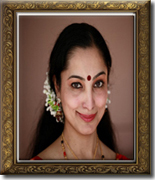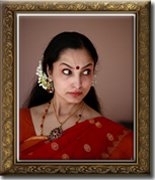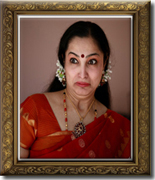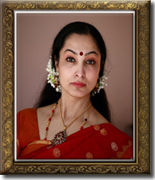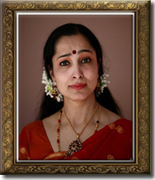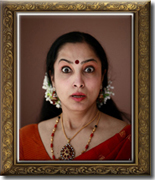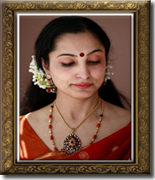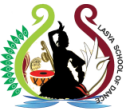Bharatanatyam is the most prominent
dance style of South India. Its name, and much of its style and technique,
derives from Bharata's Natya Shastra, an ancient handbook on dance and
drama. The general interpretation for the term BHARATHANATYAM is BHAVA
(expression), RAGA (music), THALA (rhythm), NATYAM (dance). Traditional
Bharatanatyam is a solo dance with two aspects, lasya, the graceful
feminine lines andmovements, and tandava, the masculine aspect. It combines
artistic expression with spirituality, and uses three modes of
kinetic expression, Nritta (pure movement),
Nrittya (lyrical interpretation) and Natya
(drama). For much of its early history Bharatnatyam was a devotional
dance, performed almost ritualistically in temples and at ceremonial
processions. It is generally accepted that the sharp and precise technique
of Bharatnatyam as it is practised today developed around a century
ago.
Bharatanatyam, as Balasaraswathi
puts it is an artistic yoga (natya yoga), for revealing the spiritual
through the corporeal and is the embodiment of music in its visual form.
The Bharatnatyam repertoire is rich and varied, comprises of different
adavu (basic step unit), or compositions, linked together in combinations
and interspersed with rapid and dynamic bursts of rhythm that accentuate
a particular moment in the performance. Movements of the eyes and eyebrows,
as well as the neck, shoulders and hands are also used to provide some
ornamentation and subtlety. Bharathanatyam provides
supreme aesthetic experience, drawing the dancer and the spectator through
several shades of emotions and ultimately elevating the mind to a plane
of ineffable spirituality and joy.Nritya has its place in Bharatnatyam
through abhinaya, whereby the dancer renders, interprets, and gives
expression to a song or poem. According to the ancient texts there are
nine different sentiments/emotions expressed in dance
and they are called 'Navarasas'.
The
Navarasas are categorized as Shringara
(Love), Hasya (Mirth/laughter), Karuna
(Compassion/pity), Roudra (Anger), Veera
(Courage), Bhayanaka (Fear), Bhibatsa
(Disgust), Adbutha (Surprise/wonder) and Shantham
(Peaceful).
